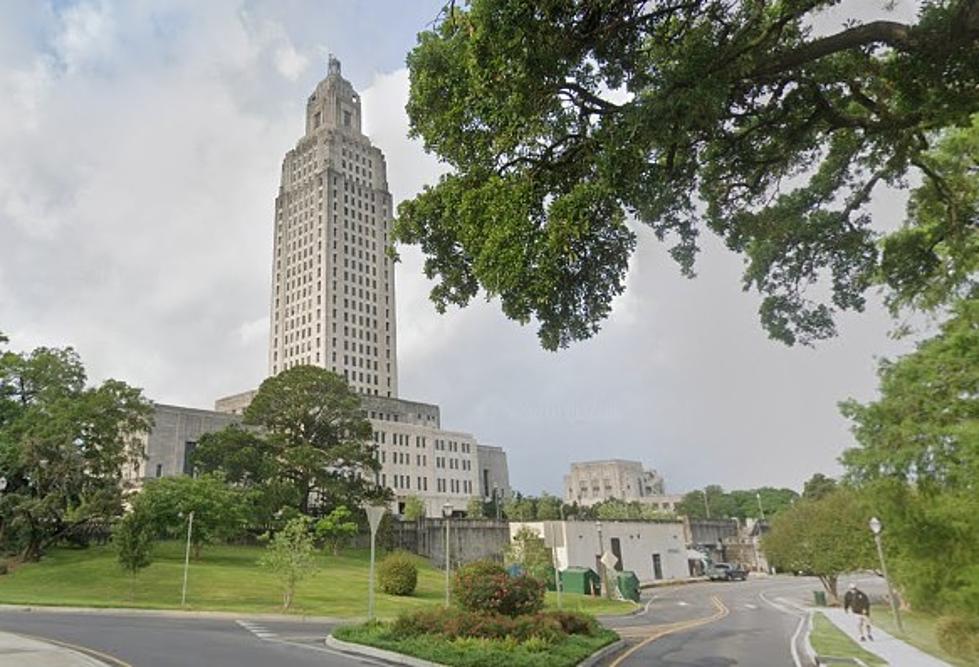
Civil Rights Groups Sue Over New Louisiana Congressional Maps
Two civil rights organizations are suing the state of Louisiana to stop the implementation of the state's new congressional redistricting plan.
On Wednesday, the Louisiana House of Representatives and the Louisiana Senate voted to overturn Governor John Bel Edwards's veto of House Bill 1 from March's special redistriction session. That bill, authored by House Speaker Clay Schexnayder (R-Gonzalez), maintained the status quo of one minority majority district stretching from New Orleans to Baton Rouge. Governor Edwards had vetoed the plan and another one, authored by Sen. Sharon Hewitt (R-Slidell), that was nearly identical to it.
Governor Edwards's reasoning for vetoing the bill was one similar to the arguments laid out by the Louisiana ACLU and the NAACP in their lawsuit, filed on Wednesday in the Middle District of Louisiana federal court.
"Louisiana’s 2022 congressional map, passed by the legislature as H.B. 1 and S.B. 5 and adopted into Louisiana law over the veto of Governor John Bel Edwards, continues the State of Louisiana’s long history of maximizing political power for white citizens by disenfranchising and discriminating against Black Louisianans," the lawsuit states. "The 2022 congressional map dilutes Black voting strength in violation of the Voting Rights Act of 1965 (“VRA”) by “packing” large numbers of Black voters into a single majority-Black congressional district, and “cracking” the State’s remaining Black voters among the five remaining districts, where they constitute an ineffective minority unable to participate equally in the electoral process. Even though Louisianans who identify as any part Black constitute 31.2% of the state’s voting age population, Black voters’ control only around 17% of the state’s congressional districts. At the same time, the plan gives disproportionate electoral power to white voters, who form a majority in five out of six, or 83%, of the State’s congressional districts, despite making up only 58% of the population.
"The State’s denial to Black Louisianans of an equal opportunity to have their voices heard is illustrated by the fact that, whereas approximately one out of three voting age residents of Louisiana is Black, Black voters have an opportunity to elect the candidate of their choice in just one out of six congressional districts. This Court must step in and remedy this clear violation of the Voting Rights Act of 1965."
Senator Hewitt disagrees.
"You can only draw a second minority district if the minority lives in an area that's geographically compact and in of a sufficient number where they'd perform as a minority district," Senator Hewitt told the Louisiana Radio Network on Wednesday. "We were just not able to physically able to draw a map with two minority districts that would perform as minority districts."
The lawsuit says Hewitt is wrong. The ACLU and the NAACP included a proposed district map introduced by Sen. Cleo Field (D-Baton Rouge) as proof that lawmakers could have created a second majority-minority district but refused.
Rep. Vincent Pierre (D-Lafayette), chairman of the Legislative Black Caucus, also says Sen. Hewitt's reasoning is baseless.
"The African American population in this state grew by 4.4% from 2010-2020," Rep. Pierre said in a release. "Because of this increase, our state’s congressional maps created should include at least two majority minority districts, but unfortunately, they do not. Furthermore, these maps as drawn violate Section 2 of the voting rights act."
For Speaker Schexnayder, the vote was a way for lawmakers to prove to the governor that they're in charge.
"[T]he overwhelming will of the legislature was heard," Speaker Schexnayder said in a statement. "House Bill 1 fulfills our constitutionally mandated duty to redistrict congress. It also shows true legislative independence and a clear separation of power from the executive branch."
An unlikely opponent to the new congressional map is voicing his displeasure. LA-3 Rep. Clay Higgins (R-Lafayette) believes Schexnayder, Hewitt, and other state legislators ignored the will of the people.
"The Schexnayder map details are troubling enough, unnecessarily dividing St. Mary and St. Martin Parishes in ways that directly contradict the will of those citizens, my constituents," Rep. Higgins said in a statement. "Beyond the details of the Schexnayder map, tragically, the map itself was born of unrighteous, deceitful back room negotiations in (Baton Rouge). This deception was, no doubt, largely unknown to legislators prior to the vote. The deceit, along with the map’s specific injury to St. Mary and St. Martin Parish, is what drives my rejection of the Schexnayder map.
“But I do not control any vote within the Louisiana State Legislature," Rep. Higgins continued. "Nor have I ever attempted to influence any legislator regarding the redistricting endeavor. My advice and opinion has always been clear: it’s the Constitutional authority of the sovereign State to determine district lines. I have no vote. Yet I do have the responsibility to share my opinion and to object if my constituents are negatively impacted. I don’t care about politics. I care about people."
The ACLU and the NAACP are asking the court to bar the state from using the Schexnayder map during this November's congressional election. The organizations also want the court to force lawmakers to adopt a plan that would create a second majority-minority district. The full lawsuit is embedded below.
Seven Forgotten Facts About Lafayette
Lafayette: 1981 vs. 2021
The Seven Modern Wonders of Acadiana
More From Classic Rock 105.1










